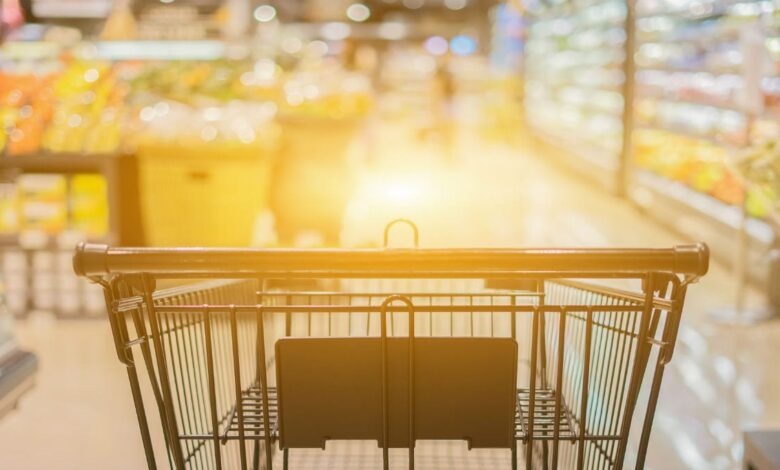
If you’re planning on making your weekly grocery shop, here are some tips to help you navigate to the nearest store. Make sure to avoid the busiest times, plan out your meals, and pay attention to price per pound and ounce labels. Avoid crowds and busy aisles, and avoid driving around in circles. These tips will help you get where you need to go while enjoying your time at the store.
Avoiding the busiest times
To avoid the busiest times to get to the nearest grocery store, you can plan your shopping trip strategically. It is advisable to avoid shopping at peak times during the weekends, particularly in the afternoons and right after work. Google recently released data that shows that grocery stores get busier around certain times, such as during holidays and pandemics. The data is based on averages and may vary from one person to the next.
Most grocery stores are large buildings, so it is possible to avoid crowded periods. In general, peak times are late afternoons and early evenings, when people are getting out of work. Check out the store’s newsletter for additional information. By planning your grocery shopping trips around these times, you can avoid the traffic that can cause long lines and expensive prices. It is also advisable to shop at off-peak hours, such as at night.
The best times to go shopping at the nearest grocery store depends on your needs. The weekends are typically less crowded, meaning that you’ll be able to find the aisles more easily. On weekdays, however, most people go grocery shopping late in the afternoon, so avoiding busy times is important if you need to buy a large quantity of items. Moreover, if you don’t mind crowded stores, Sundays are ideal for shopping.
Google Maps analyzed location history data of U.S. users from August to October. The report noted that most people visit grocery stores during weekends between 10 a.m. and 12 p.m. During the holiday season, people will spend more time rushing to the nearest grocery store. So, you can plan your shopping trips accordingly. It is advisable to make reservations at the least crowded times.
Having a meal plan
Planning a meal plan and navigating to the grocery store can save you money and time while shopping. For example, you may plan to buy chicken breasts when they are on sale and freeze them for later use. Also, it is helpful to wear comfortable shoes and allow enough time for the trip. Remember not to shop when you’re hungry! Typically, the basics are located near the perimeter of the grocery store.
To maximize savings, you should build your meal plan around meat sales. For example, if you know your meat sales will be coming up in the next few days, you can create a meal plan around these sales. In addition, grocery stores are set up to lure you into impulse purchases. If you plan ahead of time, you can make a list of all the ingredients you’ll need, such as meats, vegetables, and grains.
Paying attention to price per ounce or pound on the store label
By paying attention to the price per ounce or pound on a store’s labels, you can save a lot of money while shopping for your grocery items. You can use a unit price calculator to figure out how much a particular product will cost you. Some stores sell the same item in different sizes, but you can still compare prices by looking at the price per ounce. You can save money by purchasing broccoli in season, which is cheaper than buying it out of season.
In some states, the number of errors on a price label is regulated. For instance, regulators in New York say that 2% to 4% of errors are acceptable. However, shoppers may disagree. It is important to pay attention to unit prices because they can guide you to the best buy. While many consumers may think that larger purchases are better deals, they are not always.
A unit price is an important factor when shopping for groceries. This will help you compare different sizes and brands and make an informed choice. The unit price is listed on the store’s label, so you can compare prices between brands and items to ensure that you are getting the best value for your money. Ideally, you should avoid going to the grocery store on an empty stomach, as you are more likely to snack on high-calorie foods.
Unit pricing is a useful way to compare prices between brands. In some states, unit prices must be listed on all products. If your state doesn’t have these rules, look for unit pricing in all products. The unit price can be misleading, though. Also, the unit price can differ by a significant amount. Some stores only list the price per unit, so make sure to check both prices before buying anything.
Avoiding the aisles and crowds
Avoiding aisles and crowds when shopping is an increasingly popular way to avoid the chaos and hassle of the supermarket. According to a recent study, shoppers are more likely to buy organic foods if they avoid crowded locations and store hours. Many grocery stores are now hiring private security guards and off-duty police officers to help protect shoppers and employees from crime and disorder. In addition, supermarkets are notoriously busy during peak times such as Christmas, when crowds are often thickest and lines can be snaking. Moreover, shopping in crowded stores has led to the outbreak of diseases like COVID-19. Consequently, many shoppers have switched from traditional shopping to online shopping to avoid these problems. For instance, they can avoid crowds and queues by avoiding shopping in supermarkets and opting for home delivery.
Using these strategies, shoppers can avoid aisles and crowds when shopping at the nearest grocery store. According to the Time Use Institute, 41 million people buy most of their groceries on Saturday. By planning ahead, they can avoid the line and avoid crowds by going during off-peak hours. Alternatively, they can also opt for an online grocery store with no lines at all. But avoiding aisles and crowds while shopping is a great way to make the most out of your time in the grocery store.
If you want to avoid crowds and aisles, make sure to shop at a store with one-way aisles. This way, you’ll have less time to browse and shop. Aside from avoiding the lines, the aisles should be clear and well-lit. Avoid crowded aisles to avoid the risk of contracting COVID-19, which has become more prevalent in the United States.
Avoiding shopping when you’re hungry
It might seem like a no-brainer. When you’re ravenous, you’re more likely to overeat and purchase unnecessary items. A Cornell University study found that people who go grocery shopping when they’re hungry tend to purchase more food, including high-calorie snacks. The researchers monitored these people as they made purchases at a simulated grocery store. When the hungry group shopped, they bought 21 percent more food and 31 percent more high-calorie snacks than shoppers who were full.
A study conducted in 2011 shows that shoppers who were hungry tended to choose high-calorie foods. In both lab and field studies, hungry shoppers bought more high-calorie foods than those who were not hungry. And this effect spread to other domains. Similarly, when people are hungry and are trying to save money, they are more likely to make poor choices in other domains. In short, this is why it’s important to avoid grocery shopping when you’re hungry.
Buying food when you’re hungry is an impulse buy. People who go grocery shopping on an empty stomach tend to make poor decisions based on temporary cravings. They also tend to purchase unhealthful snacks. So, the best way to avoid impulse food purchases while grocery shopping is to make a list and stick to it. This way, you’ll be sure to pick up what you need. That way, you’ll have more money to spend on healthier snacks and foods.
Another way to avoid making unhealthy shopping decisions is to eat a snack before you go grocery shopping. A healthy snack should contain no more than 200 calories, contains protein and fiber and has less than 200 calories. For instance, Greek yogurt and berries are great snacks before you head out the door. If you have to go grocery shopping after work, try to grab an apple in the produce section. These healthy options will keep you from buying fried, sugary, or processed foods that are high in fat and calories.




